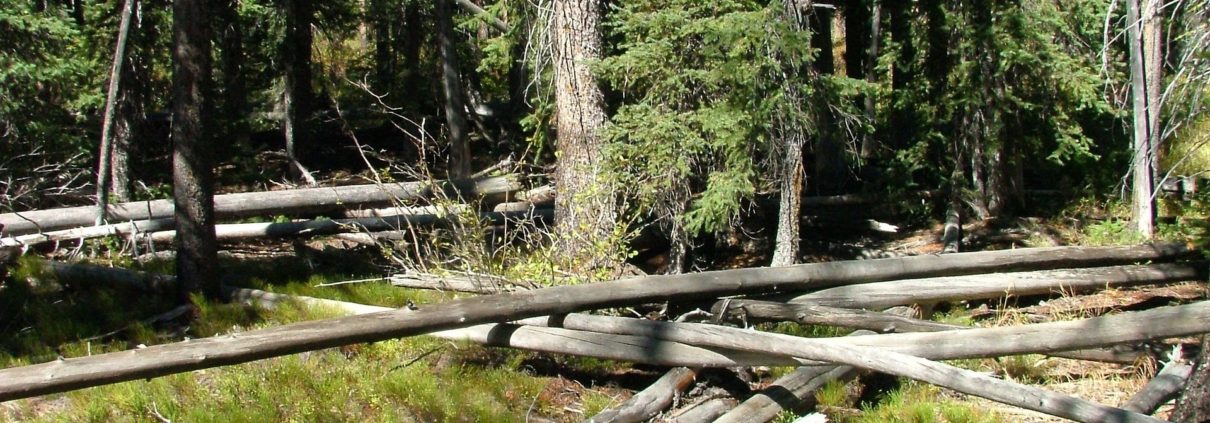The sale of property that predominantly consists of land requires an extension to the set of tools you would normally use in a residential listing. Listing land has unique requirements that necessitate additions to the team of professionals involved in a transaction, even prior to marketing the property. In certain circumstances, adding another agent or even another brokerage firm may increase both marketing power and product expertise. Opening title with a title company or attorney’s office aids the Escrow Officer in getting ahead of any title issues. Bringing environmental and biological consultants on board can provide crucial advice when working on developable acreage with sensitive habitats. Once the property is listed and ready to market, a land planner, economic development agency, and surveyor could inform potential buyers about what is for sale, or what could be produced on the property. Each phase of the process during a successful sale has important and legal ramifications if not completely correctly. Below are details on who the professionals are that we most utilize, when we recommend speaking with them and why.
Who: Surveyor/Engineer
When: At listing
Why: If the property you are selling hasn’t been surveyed, it is advisable to recommend the seller have a survey completed with the corners of the premise marked (for larger properties we like to have them stake the corners with 10′ white PVC pipe). This allows you to convey accurate measurements to perspective purchasers, while having the corners visibly marked so that buyers may visualize the boundary when touring the site. Additionally, a survey will also bring to light any issues involving encroachments, potentially avoiding costly retrades or cancelled escrows when given the foresight to deal with these problems early in the process.
When marketing transitional land, primarily for residential development, a civil engineer who is familiar with the local zoning code can be engaged to provide a lotting study. Having this study, which shows a hypothetical layout for a residential subdivision in accordance with the minimum development requirements of the zoning code and site constraints, can help support value. Similarly, hypothetical site plans can be developed for nonresidential development sites that show potential layouts and building footprints. An engineer may also be able to provide guidance or connect you with the correct contacts at the municipality to gain an understanding on the ability to access public utilities (water, wastewater, stormwater, natural gas, etc.), along with their distance from the property and whether they have enough capacity to support the proposed use.
Who: Land Use Planner / Architect
When: At listing
Why: Engaging a land planner to provide hypothetical master plan layouts that incorporate a mix of future uses for larger development sites can help prospects understand the breadth of the opportunity, assigning value to the portions of the site allocated to different product types. Additionally, if they are familiar with the local municipality, a knowledgeable land planner should be able to provide a plan that will be well received by both the market and local decision-making bodies.
Similarly, (but more typically for infill development projects) having an architect provide a feasibility study highlighting the applicable development regulations for the site (including maximum square footage or density constraints) and a massing report that shows the maximum building envelope along with architectural renderings of what a potential building may look like. These resources can help purchasers quickly assess the scope of the development opportunity at hand.

Who: Land Use Attorney
When: Prior to engaging the market
Why: To most local elected officials, nothing is more important than land use. For this reason, when working on a transitional land project it is important for the seller to have advice from counsel that understands local politics and the land use regulatory process. This will help assess the reasonableness and likelihood of success for any offers received that are contingent on development. They can also provide valuable insight during the entitlement process and increase a project’s chances of approval.
Who: Real Estate (Transaction) Attorney
When: Prior to receiving offers
Why: Throughout the sale process, the seller should seek the advice of real estate counsel to ensure they are appropriately mitigating risk. This includes reviewing their current situation prior to receiving offers so that the agent can make Buyers aware of any business terms that are unique to this seller’s specific situation throughout the process of developing an offer. Additionally, working with counsel to review all agreements and due diligence material prior to delivery can mitigate the potential for the seller to expose themselves up to unnecessary liability.
Who: Title Officer/Attorney
When: Prior to or at listing
Why: A title review should be completed as early in the process as possible to ensure marketable title. Confirming how title is vested and addressing any encumbrances (i.e. outstanding liens or deeds of trust, lis pendens, easements, etc.) early in the process can ensure you are dealing with a property’s true decision maker, along with providing time to address any concerns long before you have a buyer at the table.
Who: Water Rights Attorney
When: At listing
Why: For any asset where access to water is currently or potentially a critical component of value, having a water rights attorney provide an opinion on the validity and defensibility of any water rights may be necessary to support any assessment.
Who: Well Driller
When: At listing
Why: In regions that are dependent on groundwater, it is advisable to discuss the site with a local well driller to determine the feasibility of developing a well at the property, the condition of existing wells (if applicable), and any known issues with the groundwater resources in the area.

Who: Environmental Consultant
When: Prior to or at listing
Why: Unresolved soil and groundwater contamination can be devastating to the value of a property regardless of the source. Having a consultant provide a desktop report prior to listing the property can help educate you and the seller about any known issues in the area. If there are reasons for concern, an environmental consultant can help develop a strategy to address the concerns and provide certainty to a buyer. If the owner has a previously completed Phase I Environmental Site Assessment (ESA), a report that looks at the current and historic uses of the property to assess if they may have impacted the soil or groundwater beneath the property and could pose a threat to the environment and/or human health) a consultant can review the report and help summarize what was found previously, as well as what additional investigation (if any) may be warranted.
Who: Biological Consultant
When: At listing
Why: The existence of sensitive plant and animal species, or habitats could substantially impact the cost to develop as well as the actual developable acreage of a site. Asking an expert if there are any known species in the area along with any reasons for concern by having an informal site visit completed to look for any indications of sensitive species or habitats will provide increased certainty when engaging the market.
Who: Consulting Forester
When: At listing
Why: As detailed in the Should I Invest in Timberland Real Estate? post by Clint Flowers, ALC, a fellow RLI member, developing a solid timber management strategy is critical to the successful investment in timberland. Additionally, if a consulting forester is engaged earlier and familiar with the property, they can help prospective purchasers assess the opportunity and determine if it is the right fit for their investment criteria.
Who: Escrow Officer
When: At listing
Why: Having a trustworthy and capable Escrow Officer as part of your team will help keep a transaction on track. An Escrow Officer can often work with Title in advance of a transaction to address any issues that may need settling prior to getting the property into Escrow. This type of preparation can limit last minute issues and help ensure a smooth transaction from start to finish.
Who: Economic Development Agency (public and/or private)
When: At listing
Why: For development opportunities and transitional land, economic developers should be made aware of the offering as early as possible. Not only are they a potential source of a buyer, but they can typically provide guidance on incentives, approval processing, and general market expertise. Leveraging their involvement can save time and increase the likelihood of a project getting approved.
Who: Other Brokers/Agents
When: Prior to listing
Why: Fielding the best team on every deal is fundamental to our success in business. When given the opportunity to work on a project outside of our unique area of geographic or product expertise, a referral is not always possible depending on our relationship with the client. However, partnering with the right team of real estate professionals to provide the expertise you lack will improve your learning curve, expedite the sale process, and (most importantly) ensure you achieve the best possible results for your client. RLI has a vast network of agents across the country with extensive expertise in the various sectors.
Who: Appraiser
When: Prior to listing
Why: When analyzing a new opportunity, speaking with an appraiser knowledgeable in the market can help establish the most defensible approach to valuing a specific asset along with developing a defensible baseline value. They may also be able to provide verified comparable sales to support your analysis.
As you can see, much of this work is recommended to be completed early in the process. Understanding these aspects of a property and addressing any areas of concern sooner than later can:
- assist with establishing a defensible asking price of the property;
- ensure you present a comprehensive offering to the market;
- help you address buyers questions early and knowledgably, and most importantly;
- and decrease the level of uncertainty around a property and reduce the likelihood of surprises during escrow that may lead to avoidable delays, price reduction requests, or failed escrows.
While this list has been assembled primarily from the perspective of a listing agent, a buyer’s agent could also benefit from using this as a guide to assist either their clients with due diligence or their own preliminary investigations to determine if a site fits their client’s acquisition criteria. The list is not meant to be comprehensive but, in our experience, it addresses the vendors, consultants, and professionals we engage with most frequently. Establishing a stable base of knowledgeable experts can expand your capabilities and allow you to more effectively guide a client through the process of buying or selling real estate.
This post is part of the 2019 Future Leaders Committee content generation initiative. The initiative is directed at further establishing RLI as “The Voice of Land” in the land real estate industry for land professionals and landowners. For more posts like this, click here.
 About the Author: Matt Davis is a real estate broker with Cushman & Wakefield. He is based in San Diego, CA, and assists clients with the disposition and acquisition of investment grade agricultural and transitional land assets. He is also founding member of the company’s Land Advisory Group and Agribusiness Solutions Team. Matt is a member of RLI and serves on their 2019 Future Leaders Committee.
About the Author: Matt Davis is a real estate broker with Cushman & Wakefield. He is based in San Diego, CA, and assists clients with the disposition and acquisition of investment grade agricultural and transitional land assets. He is also founding member of the company’s Land Advisory Group and Agribusiness Solutions Team. Matt is a member of RLI and serves on their 2019 Future Leaders Committee.
 About the Author: Cynthia Bynum started in Real Estate in 2003 as an investor and acquired her license in the State of Texas in 2009. She was raised on Eagle Mountain Lake and is quite familiar with properties in Parker and Tarrant Counties. Joining Trinity Territory Brokerage firm was the best move for her career. Her specialties range from representing buyers and listing residential properties to commercial, land sales, property management, foreclosures, and leasing.
About the Author: Cynthia Bynum started in Real Estate in 2003 as an investor and acquired her license in the State of Texas in 2009. She was raised on Eagle Mountain Lake and is quite familiar with properties in Parker and Tarrant Counties. Joining Trinity Territory Brokerage firm was the best move for her career. Her specialties range from representing buyers and listing residential properties to commercial, land sales, property management, foreclosures, and leasing.
 About the Author: Tim Hadley, ALC, is an agent with Keller Williams Realty in Gladstone, MO. He joined the REALTORS® Land Institute in 2017 and is currently a member of their Future Leaders Committee.
About the Author: Tim Hadley, ALC, is an agent with Keller Williams Realty in Gladstone, MO. He joined the REALTORS® Land Institute in 2017 and is currently a member of their Future Leaders Committee. About the Author: Kasey Mock is the Director of KW LAND Division at Keller Williams Realty International. Mock is a member of the REALTORS® Land Institute, serving on their Future Leaders Committee. Make sure to check out his break out session diving further into this topic at the 2018 National Land Conference in Nashville, TN, in March.
About the Author: Kasey Mock is the Director of KW LAND Division at Keller Williams Realty International. Mock is a member of the REALTORS® Land Institute, serving on their Future Leaders Committee. Make sure to check out his break out session diving further into this topic at the 2018 National Land Conference in Nashville, TN, in March.


 About The Author:
About The Author: 


 About the Author:
About the Author:  About the Author:
About the Author: 






 About the Author:
About the Author: 


 About the author:
About the author: 
 About the Author:
About the Author: 
 About the author:
About the author: 






 About the Author:
About the Author: 